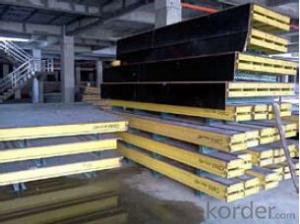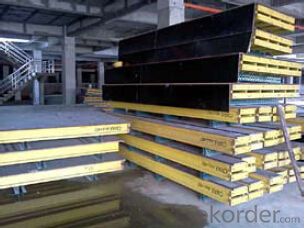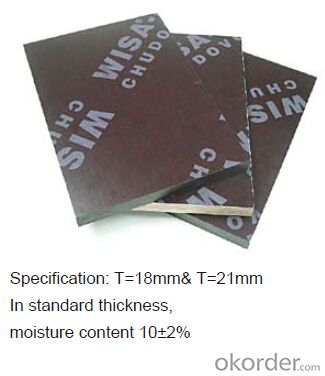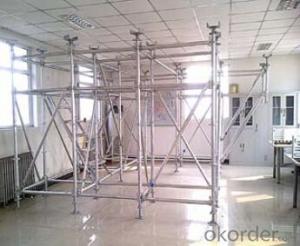Plywood Formwork systems for Formwork and scaffolding
- Loading Port:
- Tianjin
- Payment Terms:
- TT OR LC
- Min Order Qty:
- 50 m²
- Supply Capability:
- 1000 m²/month
OKorder Service Pledge
Quality Product, Order Online Tracking, Timely Delivery
OKorder Financial Service
Credit Rating, Credit Services, Credit Purchasing
You Might Also Like
Plywood --- make perfect concrete surface
WISA-Form Birch is a coated special plywood using in the formwork systems where high
requirements are set on the concrete surface and the times of reuses.
With CNBM timber beam & WISA plywood, the formwork is low weight but high load capacity, it is
widely used in construction.
Characteristics:
◆ Component with high standardization.
◆ Assembling in site, flexible application.
◆ Light weight, easy transportation and storage.
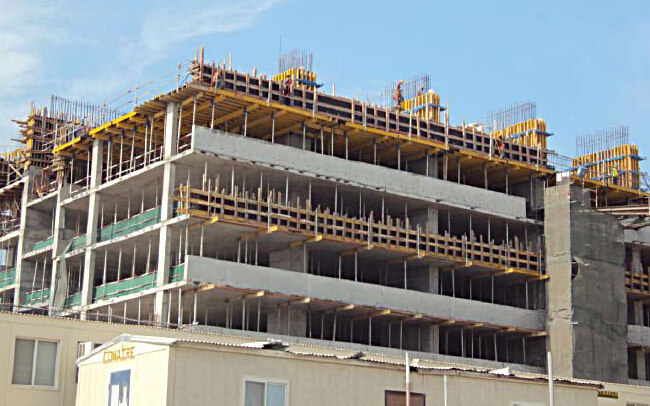
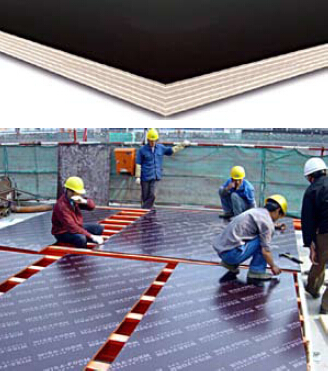
- Q: How does steel formwork contribute to better concrete compaction?
- Steel formwork contributes to better concrete compaction in several ways. Firstly, steel formwork provides a rigid structure that holds the concrete in place during the pouring and curing process. This rigidity prevents the concrete from moving or shifting, allowing for more even distribution of the concrete mix and reducing the risk of segregation or honeycombing. Additionally, steel formwork often includes various features, such as tie rods and walers, which allow for proper alignment and tightening of the formwork. This ensures that the formwork remains stable and tight, minimizing any gaps or voids that could lead to poor compaction. Moreover, steel formwork is typically designed with smooth surfaces, which helps to create a smooth and uniform finish on the concrete. This smoothness allows for better compaction as the concrete can flow more easily and evenly into all areas of the formwork. Furthermore, steel formwork is durable and can withstand the pressure exerted by the concrete during the pouring and compaction process. This durability ensures that the formwork remains intact and does not deform or collapse, allowing for proper compaction of the concrete. Overall, steel formwork provides a solid and stable structure that allows for better control of the concrete pouring and compaction process. It helps to eliminate any potential issues that may arise during the compaction process, resulting in a higher quality and more densely compacted concrete structure.
- Q: What are the different material handling requirements for steel formwork?
- Steel formwork is widely used in construction projects as it offers several advantages such as durability, reusability, and the ability to withstand high pressure and loads. However, there are specific material handling requirements associated with steel formwork that need to be considered. 1. Handling and transportation: Steel formwork panels are heavy and require proper handling and transportation methods. They should be lifted with appropriate lifting equipment such as cranes or forklifts, ensuring that the load is evenly distributed. Special care should be taken to avoid dropping or damaging the panels during transportation. 2. Storage: Steel formwork panels should be stored in a dry and well-ventilated area to prevent rust and corrosion. They should be stacked properly, ensuring that the panels are supported evenly to avoid deformation. Stacking should be done in a way that allows easy access to individual panels without damaging others. 3. Cleaning and maintenance: Regular cleaning and maintenance of steel formwork are necessary to ensure their longevity and reusability. After each use, the formwork should be cleaned to remove any concrete residue, dirt, or debris. Steel formwork should also be inspected for any signs of damage, such as cracks or bends, and repaired or replaced if necessary. 4. Assembly and disassembly: Steel formwork requires skilled workers for proper assembly and disassembly. The panels should be aligned accurately and securely connected to form a watertight structure. During disassembly, care should be taken to avoid any damage to the panels, and they should be carefully dismantled to ensure their reusability. 5. Surface protection: To enhance the durability and lifespan of steel formwork, surface protection measures should be taken. This includes applying anti-corrosion coatings or paint to prevent rust and corrosion. Regular inspections should be conducted to identify any signs of damage or deterioration on the surface and take necessary actions to maintain the integrity of the formwork. In summary, the material handling requirements for steel formwork include proper handling and transportation methods, appropriate storage and stacking, regular cleaning and maintenance, skilled assembly and disassembly, and surface protection measures. Adhering to these requirements ensures the optimal performance and longevity of steel formwork in construction projects.
- Q: How is steel formwork secured to the ground?
- Steel formwork is secured to the ground through several methods to ensure stability and safety during the construction process. One common way to secure steel formwork is by using ground anchors. These anchors are usually made of steel or concrete and are driven into the ground at regular intervals along the perimeter of the formwork. The anchors are then connected to the formwork using steel rods or cables, providing a strong and secure attachment to the ground. Another method of securing steel formwork to the ground is by using steel stakes. These stakes are driven into the ground at regular intervals, and the formwork is then attached to the stakes using various clamps or brackets. This method is commonly used when the ground is not suitable for using ground anchors, such as in rocky or uneven terrains. In addition to ground anchors and stakes, steel formwork can also be secured to the ground by using concrete footing or foundation. This involves pouring concrete footings or foundations at regular intervals along the perimeter of the formwork. The formwork is then attached to the concrete using bolts or other fasteners, providing a solid and stable connection. The method of securing steel formwork to the ground may vary depending on the specific requirements of the construction project and the type of ground conditions. It is essential to follow the manufacturer's instructions and consult with structural engineers to ensure the proper installation and secure attachment of the formwork to the ground.
- Q: Position of horizontal construction joint of shear wall. The first layer is higher than the standard layer, the large template in accordance with the standard layer, the first part of the difference with the roof can be poured?
- The project is from the construction point of view. From the point of view of construction joints should be left in the column 1/2 high as well, where the shear is small. Consistent with the principle of beam slab stay within the 1/4.
- Q: How does steel formwork compare to other formwork materials in terms of cost?
- Steel formwork is generally more expensive compared to other formwork materials such as wood or plastic. However, it offers numerous advantages including durability, reusability, and better structural stability, which can offset the initial higher cost in the long run.
- Q: What is steel formwork?
- Steel formwork is a type of temporary structure made from steel that is used in construction projects to create the desired shape and structure of concrete elements such as walls, columns, and slabs. It provides a strong and durable framework for the concrete during the pouring and curing process, ensuring accuracy and stability in the final structure.
- Q: Can steel formwork be used for precast concrete balconies?
- Indeed, precast concrete balconies can make use of steel formwork. Construction frequently employs steel formwork for diverse purposes, encompassing precast concrete components. This approach presents numerous benefits, notably durability, strength, and adaptability. Moreover, steel formwork can effortlessly be tailored to match the precise measurements and configurations required, facilitating the realization of intricate balcony designs. Additionally, it yields a polished surface for the concrete, diminishing the necessity for supplementary finishing tasks. Furthermore, steel formwork can be repeatedly utilized, rendering it an economical choice for precast concrete balconies.
- Q: Can steel formwork be used in areas with limited labor availability?
- Yes, steel formwork can be used in areas with limited labor availability. Steel formwork is known for its durability and reusability, making it suitable for areas where labor is scarce. It requires minimal manual labor for assembly and disassembly, reducing the need for a large workforce. Additionally, steel formwork systems are designed to be easily transported and installed, allowing for efficient construction processes even in areas with limited labor resources.
- Q: Can steel formwork be used for industrial flooring?
- Yes, steel formwork can be used for industrial flooring. Steel formwork is known for its durability and strength, making it suitable for heavy-duty applications such as industrial flooring. It can withstand the weight and pressure exerted by heavy machinery and equipment, providing a stable and sturdy base for industrial operations. Additionally, steel formwork offers the advantage of being reusable, which makes it a cost-effective choice for flooring in industrial settings.
- Q: How does steel formwork affect the overall construction material waste reduction?
- Steel formwork is a construction technique that involves using steel panels and frames to create temporary molds or structures into which concrete is poured. This method offers several advantages over traditional timber formwork, one of which is its positive impact on overall construction material waste reduction. Firstly, steel formwork is highly durable and can be reused multiple times, whereas timber formwork often needs to be replaced after a few uses due to wear and tear. This means that steel formwork significantly reduces the amount of material waste generated during the construction process, as there is minimal need for regular replacements. Additionally, steel formwork is more precise and accurate compared to timber formwork, resulting in less waste of concrete. The precise measurements and tight joints of steel formwork ensure that concrete is poured and set correctly, minimizing the need for additional material to fill gaps or rectify errors. This leads to a reduction in material waste, as less concrete is wasted during the construction process. Moreover, steel formwork is easily adaptable and adjustable to different shapes and sizes, allowing for efficient and flexible use on various construction projects. The versatility of steel formwork means that it can be reused for different structures or modified to suit changing requirements. This adaptability further reduces material waste, as the same formwork can be utilized for multiple projects or repurposed as needed. Furthermore, steel formwork is known for its high strength and load-bearing capacity, enabling it to withstand heavy concrete pressure without deformation or damage. This strength allows for taller and more complex structures to be constructed using steel formwork, reducing the need for additional materials such as support beams or columns. By eliminating the need for these extra materials, steel formwork contributes to a significant reduction in overall construction material waste. In summary, steel formwork positively impacts overall construction material waste reduction through its durability, precision, adaptability, and strength. By minimizing the need for regular replacements, reducing concrete waste, allowing for reuse and adaptability, and eliminating the need for additional materials, steel formwork plays a crucial role in promoting sustainable construction practices and reducing environmental impacts.
Send your message to us
Plywood Formwork systems for Formwork and scaffolding
- Loading Port:
- Tianjin
- Payment Terms:
- TT OR LC
- Min Order Qty:
- 50 m²
- Supply Capability:
- 1000 m²/month
OKorder Service Pledge
Quality Product, Order Online Tracking, Timely Delivery
OKorder Financial Service
Credit Rating, Credit Services, Credit Purchasing
Similar products
Hot products
Hot Searches
Related keywords
